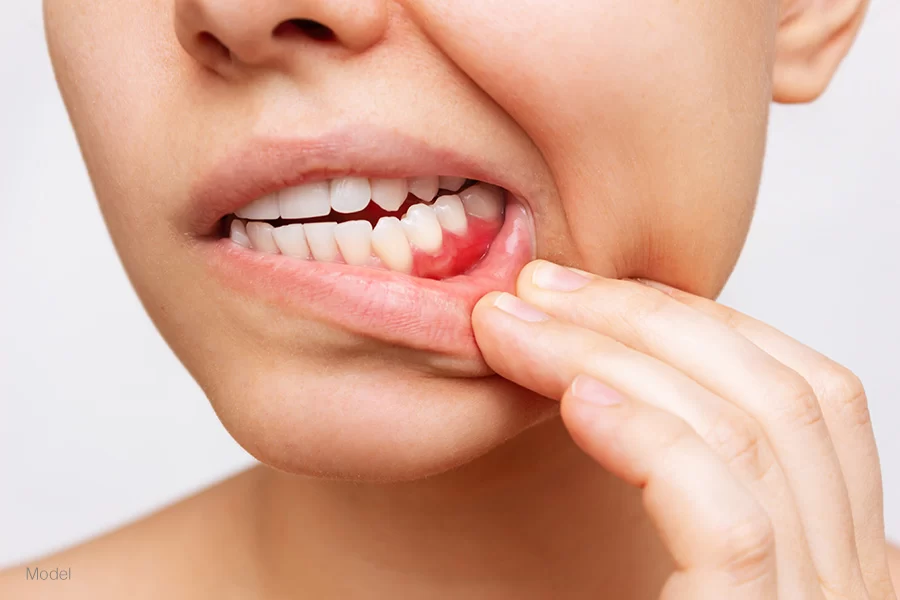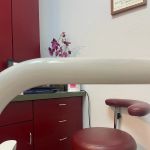
Periodontal Pockets: Causes, Symptoms, and Treatment Options
- What Are Periodontal Pockets?
- Causes of Periodontal Pockets
- Symptoms of Periodontal Pockets
- Treatment for Periodontal Pockets
- Preventing Periodontal Pockets
What Are Periodontal Pockets?
Periodontal pockets are spaces that develop between your teeth and gums as a result of periodontal disease. These pockets form when the gums become inflamed due to the buildup of plaque and tartar, which leads to gum tissue destruction. In healthy gums, the space between the tooth and gum is minimal, but when periodontal disease progresses, these pockets can deepen and trap bacteria, leading to further complications.
If left untreated, periodontal pockets can lead to tooth mobility and even tooth loss. Early intervention is essential to prevent the condition from worsening.
Causes of Periodontal Pockets
The primary cause of periodontal pockets is gum disease (periodontitis), which is caused by a bacterial infection in the gums. Other contributing factors include:
- Poor Oral Hygiene: Failing to brush and floss regularly allows plaque to build up along the gumline, eventually leading to the formation of periodontal pockets.
- Smoking: Smoking is a significant risk factor for periodontal disease, as it impairs gum healing and encourages bacterial growth in the mouth.
- Genetics: Some people are more genetically predisposed to gum disease, which increases the likelihood of developing periodontal pockets.
- Diabetes: People with uncontrolled diabetes are more susceptible to gum infections and periodontal disease.
- Medications: Certain medications can reduce saliva production, leading to dry mouth and an increased risk of developing gum disease.
Understanding the causes can help you take preventive measures to avoid the development of periodontal pockets.
Symptoms of Periodontal Pockets
Periodontal pockets may not cause noticeable symptoms in the early stages. However, as the disease progresses, symptoms become more apparent. Common signs of periodontal pockets include:
- Swollen or Bleeding Gums: Gums may bleed during brushing or flossing due to inflammation and infection.
- Receding Gums: You may notice that your gums are pulling away from your teeth, making them appear longer.
- Bad Breath: Chronic bad breath (halitosis) is often a result of bacteria trapped in the periodontal pockets.
- Pain or Sensitivity: Periodontal pockets can cause discomfort when chewing or sensitivity to hot and cold temperatures.
- Loose Teeth: As the disease progresses, tooth mobility can occur due to the destruction of the supporting bone and tissues.
If you experience any of these symptoms, it's important to consult with a dentist promptly to address the problem before it worsens.
Treatment for Periodontal Pockets
Treating periodontal pockets is crucial to stop the progression of gum disease and prevent further complications. The treatment approach varies depending on the severity of the pockets:
- Scaling and Root Planing: This non-surgical procedure involves deep cleaning of the teeth and gums to remove plaque and tartar from below the gumline. Scaling and root planing are often the first step in treating periodontal pockets.
- Antibiotics: Antibiotic treatments may be used to control infection and reduce inflammation in the gums. This can be in the form of oral antibiotics or antibiotic gels applied directly to the affected area.
- Periodontal Surgery: For advanced periodontal disease, surgical procedures like flap surgery or bone grafts may be necessary to treat deep periodontal pockets and repair damaged tissues.
- Laser Therapy: Laser treatment can be used to remove infected tissue and help promote the healing of the gums.
It's essential to follow your dentist's recommendations for treatment to restore your gum health and prevent further damage to the teeth and bone structure.
Preventing Periodontal Pockets
Preventing periodontal pockets largely depends on maintaining excellent oral hygiene and taking proactive steps to care for your gums. Here are some key practices:
- Brush Twice a Day: Brushing your teeth with fluoride toothpaste at least twice a day helps remove plaque and prevent gum disease.
- Floss Daily: Flossing removes plaque and food particles from between your teeth and along the gumline, where a toothbrush can’t reach.
- Regular Dental Checkups: Seeing your dentist for regular cleanings and exams helps catch issues early, preventing the formation of periodontal pockets.
- Quit Smoking: Smoking harms your gums and makes them more susceptible to infection. Quitting can significantly improve your gum health.
- Eat a Healthy Diet: A diet rich in vitamins and minerals, especially vitamin C, helps maintain healthy gums and boosts the immune system.
By following these preventive measures, you can significantly reduce the risk of developing periodontal pockets and ensure long-term gum health.
If you're concerned about periodontal pockets or suspect you may have gum disease, it's essential to seek professional dental care. To learn more about periodontal pocket treatments or to schedule an appointment, visit Dentistry Toothtruth today. Taking care of your gums today can save your smile tomorrow!







 West Covina Dental Group and Orthodontics4.0 (274 review)
West Covina Dental Group and Orthodontics4.0 (274 review) Avella Family and Implant Dentistry4.0 (425 review)
Avella Family and Implant Dentistry4.0 (425 review) Dr. Chona F. Yu, DDS4.0 (18 review)
Dr. Chona F. Yu, DDS4.0 (18 review) South Mississippi Smiles - Gulfport4.0 (454 review)
South Mississippi Smiles - Gulfport4.0 (454 review) ClearChoice Dental Implant Center4.0 (314 review)
ClearChoice Dental Implant Center4.0 (314 review) Fair Oaks Orthodontics5.0 (29 review)
Fair Oaks Orthodontics5.0 (29 review) The Importance of Oral Health Education During Pregnancy for a Healthy Pregnancy
The Importance of Oral Health Education During Pregnancy for a Healthy Pregnancy Best Tips for Brushing Your Teeth Properly for Healthy Gums: Essential Techniques for Oral Health
Best Tips for Brushing Your Teeth Properly for Healthy Gums: Essential Techniques for Oral Health Why Skipping Dental Checkups Can Lead to Bigger Oral Health Problems
Why Skipping Dental Checkups Can Lead to Bigger Oral Health Problems Advantages of Porcelain Dental Restorations
Advantages of Porcelain Dental Restorations How Can Diabetes Cause Tooth and Gum Problems? Preventing and Managing Oral Health Issues
How Can Diabetes Cause Tooth and Gum Problems? Preventing and Managing Oral Health Issues Healthy Habits for Promoting Good Oral Health and Hygiene: Tips for a Healthy Smile
Healthy Habits for Promoting Good Oral Health and Hygiene: Tips for a Healthy Smile